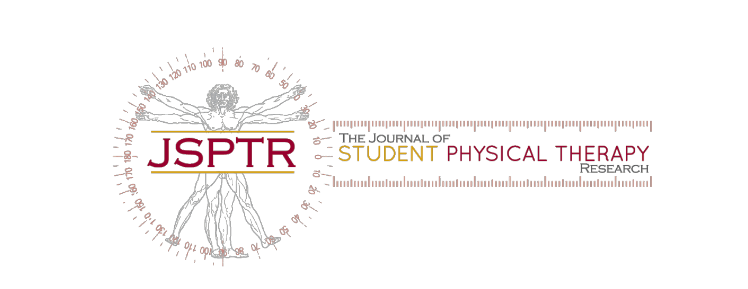Investigating the Efficacy of Chinese Cupping and Static Stretching to Increase Hamstring Extensibility in Asymptomatic Individuals with Hamstring Tightness: A Pilot Study
Jodan Garcia, PT, DPT, OCS, FAAOMPT; 1 Kathryn Maeder, BS, SPT; 1 Katherine Hamil, PT, DPT; 1 John Isaac Smith, PT, DPT; 1 Giangoc Tran, BSEd, SPT; 1 Raphael Rahman, BS, SPT1; Bradley Farrell, PhD1
1Georgia State University, Department of Physical Therapy
Abstract
Study Design: Pilot Study
Objective: To analyze the effects of Chinese cupping with static stretching versus static stretching alone on hamstring flexibility in healthy young adults.
Background: Evidence gathered from previous studies demonstrate benefits from passive stretching on hamstring flexibility, but there are no significant benefits from Chinese cupping. There is no current study investigating the effects of Chinese cupping combined with static stretching on hamstring flexibility.
Methods: A total of 21 healthy subjects were randomly assigned to either the control group (static stretching) or intervention group (cupping and static stretching) for a period of biweekly data collection lasting 6-8 weeks.
Results: Both control and intervention groups showed improvement in hamstring flexibility for the data collections, however there was no significant difference found between the groups.
Conclusion: The hypothesized superior therapeutic benefit of the clinical use of cupping therapy with static stretching is not supported. There would need to be further clinical-based research done to explore the effects of cupping on hamstring extensibility before it can be used in a clinical setting.
Classification-Based Low Back Pain Management in a Patient: A Case Report
Kristen Dolittle Moran, PT, DPT; 1 Ann Lucado, PT, PhD; 1 Nicholas Orton, PT, DPT, CSCS 1
1Mercer University, College of Health Professions, Doctor of Physical Therapy Program – Atlanta, GA
Abstract
Study Design: Case Report
Background: Low back pain is one of the most common reasons for individuals to seek outpatient physical therapy. While it is prevalent, low back pain can be difficult to classify and treat. Multiple evidence-based classification systems exist with varying approaches to treatment.
Case Description: This case report explores the clinical reasoning and decision-making process in treatment of a patient falling into multiple low back pain classification categories based on the impairment/functional-based classification system. The patient discussed is an otherwise healthy 27-year-old female presenting to physical therapy with a chief complaint of an acute flare-up of persistent low back pain. The rationale behind the sequence in which classification categories were addressed, the decisions behind when to change categories based on emerging data, and the intervention strategies implemented to successfully manage this patient are illustrated.
Outcomes: The patient was seen for a total of 13 visits over a span of two months. The outcome measures used in this case report included the Revised Oswestry Disability Index for low back pain and the numeric pain rating scale. At discharge, both outcome measures demonstrated improvement with achievement of all patient goals set at initial visit, return of function, and ability to manage symptoms independently.
Conclusion: Use of the impairment/functional-based classification system approach to low back pain management proved to be both beneficial and effective. This classification-based approach to patient management may assist in clinical decision making when treating individuals with acute flare-ups of persistent low back pain.
DPT Diversity, Equity, and Inclusion (DEI) Practices and Student Physical Therapists’ Self-Perceived Cultural Competence
Kathryn A. Maeder, PT, DPT; 1 Christina M. Chavez, PT, DPT; 1 Tiffany N. Greenwood, PT, DPT; 1 Carla F. Huggins, PT, DPT; 1 Bradley J. Farrell, PhD 1
1Georgia State University, Department of Physical Therapy
Abstract
Study Design: Pilot Study
Purpose: The purpose of this study is to survey current and recently graduated students of Physical Therapy regarding the Diversity, Equity, and Inclusion (DEI) practices of their Doctorate of Physical Therapy programs, and how these practices influenced their experience and their perceived cultural competence in clinical practice. Student perceptions of these concepts and practices give programs an overall idea of the impact of the DEI and cultural competency training within their program.
Number of Subjects: 162
Methods: Current students and recent graduates of eight physical therapy programs in the southeastern United States were recruited via email to participate in an online Qualtrics survey. The survey questions aimed to capture the student experience/perception of DEI practices implemented in their program and their perceived cultural competence skills.
Results: A total of 162 students/alumni (n=162) completed the Qualtrics survey from 8 different DPT programs in the southeastern United States. True/False/Unsure questions regarding the presence of a student/faculty from an underrepresented minority group (URM) and the presence of someone of the same race/ethnicity as the subject in their cohort, program, and faculty showed an overall mean score of x=0.907 (0=False, 0.5=Unsure, 1=True). Questions regarding the subject’s perception of their cohort, program, and faculty as “racially and ethnically diverse” showed an overall mean score of 3.3 (0=Strongly Disagree- 6=Strongly Agree). Questions regarding the subject's self-perceived cultural competency skills showed an overall average score response of 4.75.
Conclusion: Subjects overall regard their program as racially and ethnically diverse across student cohorts and programs. Students on average regarded themselves as overall culturally competent. Faculty representation and diversity was overall reported below the average response. This suggests adequate DEI environments and cultural competency training, yet students recognize there may be a lack of diverse representation amongst DPT faculty.


